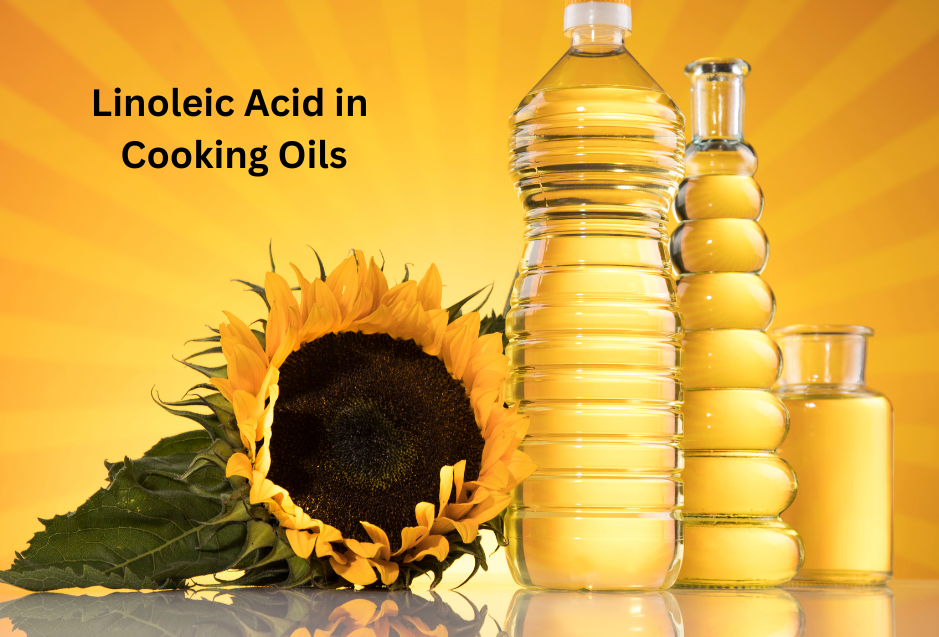Linoleic acid is an omega-6 fatty acid present in many popular cooking oils.
While this essential fat plays a role in supporting our body’s health, understanding its effects is key to making the healthiest choices in the kitchen.
It's a common component in many vegetable and seed oils, such as:
- Corn oil
- Soybean oil
- Sunflower oil
- Cottonseed oil
- Safflower oil
These oils are high in omega-6 fats, which, in large quantities, can cause inflammation in the body.
This can be a concern because the modern diet is often overloaded with omega-6, but low in omega-3s, which help balance inflammation.
While linoleic acid is an essential nutrient for our bodies, it's important to consume it in moderation.
Surprisingly, linoleic acid can be both beneficial and potentially problematic, depending on how much you consume and the types of oils you use daily.
Omega-6 and omega-3 fatty acids both serve important functions, yet they need to stay in balance.
Too much omega-6 from linoleic acid and not enough omega-3 can tip the scales towards inflammation. That’s why it’s helpful to know which oils contain higher or lower amounts of linoleic acid.
In fact, the type of cooking oil you choose can make a difference. Olive oil, for example, is known for its balanced fat profile. It contains far less linoleic acid than other popular oils, making it a great choice for those wanting to limit omega-6 intake.
Olive Oil vs. Other Oils: Why It Stands Out
One reason olive oil is considered healthy is its higher oleic acid content. Oleic acid is a monounsaturated fat that’s stable and less likely to cause inflammation. Olive oil typically contains only about 3-12% linoleic acid, compared to over 50% in oils like corn or sunflower oil.
With less linoleic acid and more heart-healthy oleic acid, olive oil offers benefits that go beyond simply cooking. It’s packed with antioxidants and polyphenols, which are compounds that support your health at a cellular level.
A Quick Guide to Linoleic Acid in Common Cooking Oils
To make informed choices, here’s a look at the linoleic acid content in some popular oils:
- Corn Oil: Around 54-60% linoleic acid
- Soybean Oil: About 51%
- Sunflower Oil: Up to 70%
- Olive Oil: Typically 3-12%
These numbers help highlight why olive oil is a go-to for health-conscious cooking. While the linoleic acid content in other oils can quickly add up, olive oil keeps it low, making it less likely to upset the omega-6 and omega-3 balance.
The Benefits of Olive Oil’s Balanced Profile
In addition to its low linoleic acid content, olive oil is packed with benefits.
It has a higher smoke point than many other oils with similar health benefits, making it versatile for moderate cooking. And, unlike refined oils, extra-virgin olive oil retains more antioxidants, supporting overall wellness.
Choosing oils that are rich in oleic acid, like olive oil, can also make a difference in reducing inflammation risks.
With olive oil, you get the essential fats you need, minus the excessive omega-6.
Making the Right Choice for Your Health Goals
When choosing cooking oils, it’s all about balance. Oils like corn and sunflower oil may offer flavor and texture, but their high linoleic acid content means they’re best used in moderation.
Olive oil, on the other hand, brings a more balanced profile and is perfect for everyday use.
In the end, choosing olive oil lets you keep linoleic acid levels in check, while still enjoying the benefits of healthy fats.
So next time you reach for oil, consider the benefits of olive oil’s balanced, heart-healthy profile.


Comments
This is new intro me . Thank you.
I will cook with Olive oil more from now on.
Is Linoeic acid bad fr increasing breast cancer, & Maybe other cancers???
Biased
I am grateful for this content. I am curious about studies using EVOO to combat symptoms of inflammation in our brains such as in Alzheimer’s or other dementia?